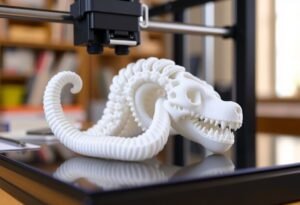The Internet of Things (IoT) is revolutionizing various sectors, and its impact on smart grids is no exception. By leveraging innovative technologies, IoT enables more efficient energy management, improved grid reliability, and enhanced user engagement, making it a crucial aspect of today’s energy solutions.
The Role of IoT in Modern Smart Grids
In recent years, the integration of IoT technologies into smart grids has transformed the way we think about energy distribution and management. Smart grids utilize sensors, automation, and data analytics to optimize energy flow, enhance reliability, and integrate renewable energy sources. This innovation enables utilities to monitor energy consumption in real-time, identify issues promptly, and improve overall operational efficiency. The role of IoT in smart grids is pivotal, allowing for increased flexibility, reduced energy waste, and a more resilient infrastructure capable of adapting to changing energy demands.
Enhancing Efficiency Through Smart Meters
One of the significant innovations within smart grids powered by IoT solutions is the deployment of smart meters. These devices provide granular data on energy consumption patterns, allowing consumers to make informed decisions and utilities to manage demand response more effectively. Smart meters promote energy efficiency by facilitating the integration of renewable energy sources and enabling real-time adjustments to energy distribution. The data collected by these devices allows for predictive analytics, helping utilities forecast energy demands more accurately and adapt their strategies accordingly.
Smart Grids and Renewable Energy Integration
As societies increasingly shift towards sustainable practices, the integration of renewable energy sources is essential for future energy systems. The IoT plays a critical role in facilitating this transition by providing the necessary infrastructure for connecting solar, wind, and other renewable energy sources effectively into the grid. Through smart technologies, utilities can manage intermittent power supplies and enhance grid stability, maximizing the benefits of clean energy sources. The synergy between IoT and renewable energy not only reduces our carbon footprint but also contributes to a more innovative energy landscape.
Improving Grid Reliability and Resilience
The reliability of energy supply is paramount, and IoT innovations have significantly bolstered the resilience of smart grids. By utilizing predictive maintenance and real-time monitoring systems, utilities can detect potential issues before they escalate into major outages. The incorporation of IoT technologies enhances situational awareness, allowing for quick and efficient responses to disruptions. This increased reliability assures consumers of uninterrupted energy supply, fostering trust in the energy system while reducing operational costs for utilities.
User Engagement and Empowerment
IoT technologies foster increased engagement and empowerment among consumers. Through mobile applications and online platforms connected to smart grids, users can monitor their energy usage in real-time, explore energy-saving tips, and even participate in demand response programs. This transparency empowers consumers, encouraging energy conservation and sustainable practices. An engaged consumer base is crucial for fostering a culture of innovation in energy usage, ultimately leading to a more sustainable future.
The Future of Smart Grids with IoT Innovations
Looking ahead, the future of smart grids is closely intertwined with continuous IoT innovations. The development of advanced machine learning algorithms and artificial intelligence applications will enhance the capabilities of smart grids even further. As technology evolves, we can expect greater integration of decentralized energy resources and more intelligent energy management systems. The potential of IoT in revolutionizing our energy infrastructure is immense, paving the way for a cleaner, more efficient, and resilient energy future.





















